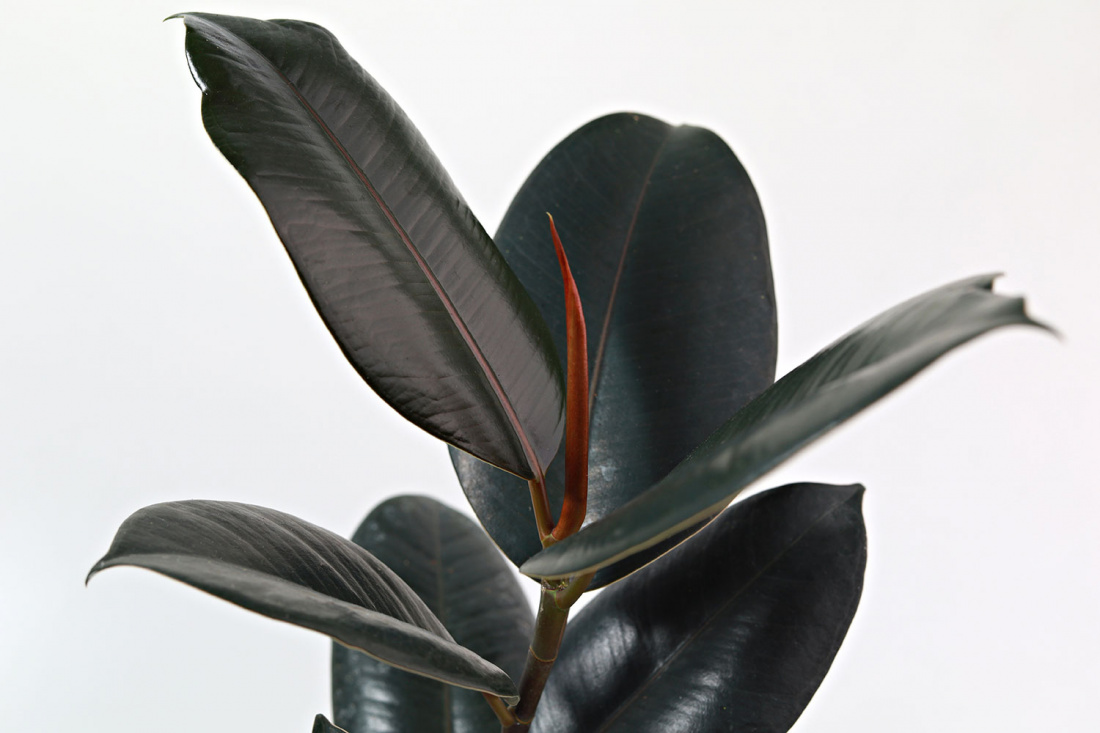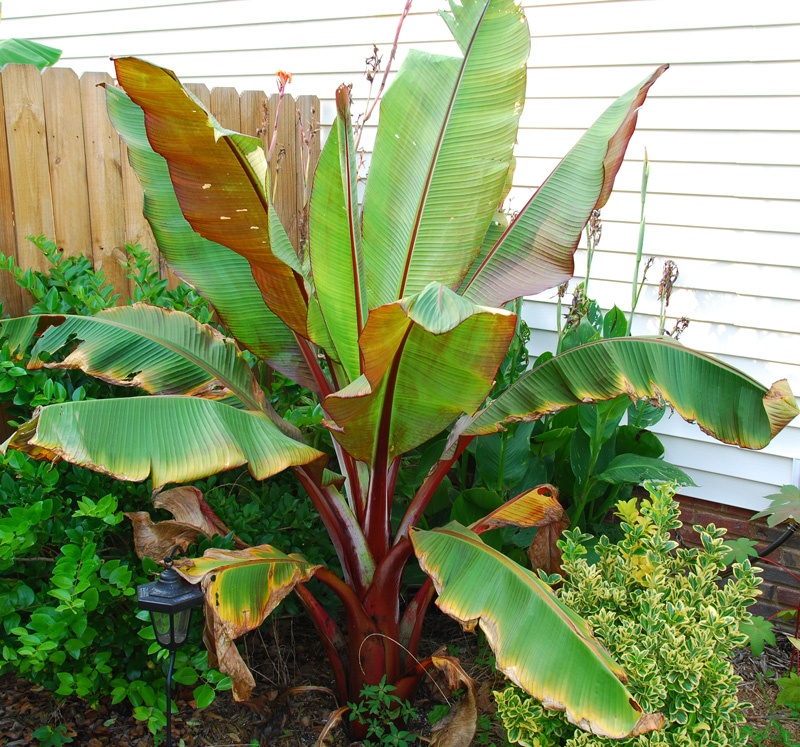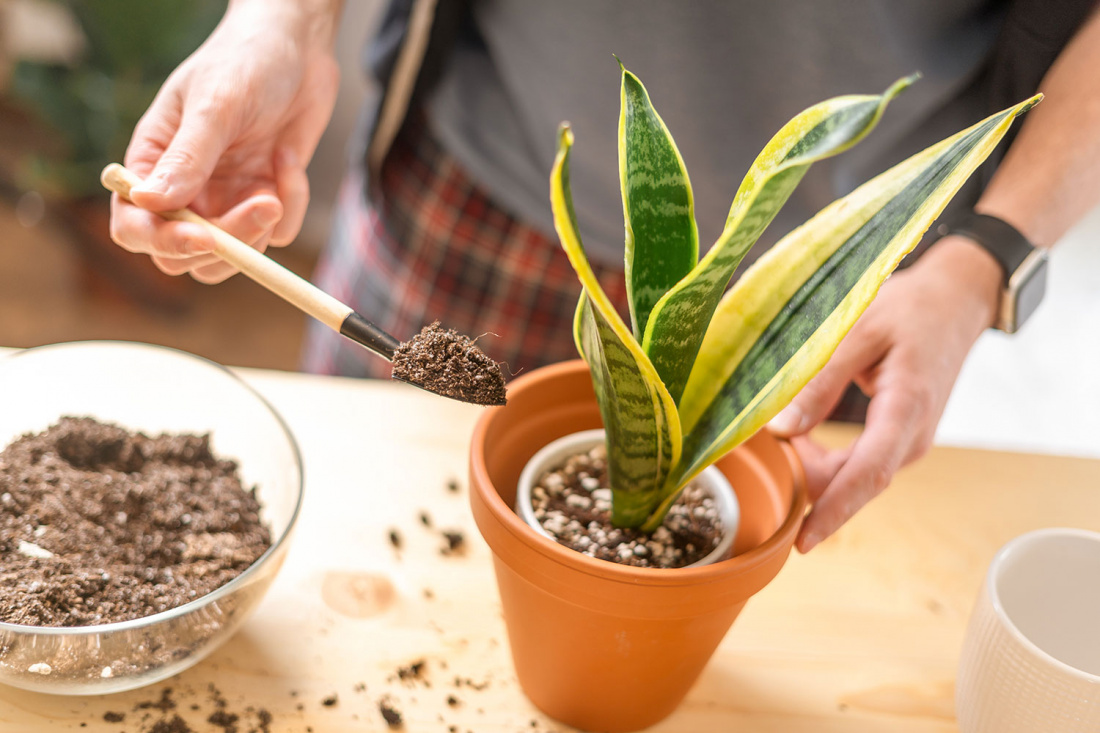Many houseplants benefit from being outside during the warmer months, where fresh air, higher light levels, and increased humidity help develop vigor and brighter colors. But as the cooler weather sets in, cold-sensitive houseplants need to be protected by moving them indoors. As houseplants have differing frost and chill hardiness levels, this doesn’t mean that all balcony and patio plants must be overwintered inside. Here’s some guidance on identifying which plants to bring indoors before winter and how to prepare them.

Cold-Sensitive Houseplants – The Tropicals
Originating from equatorial climate zones where winters are non-existent, tropical plants cannot survive outdoors in the harsh winters characteristic of most U.S. states. They all have in common the ability to thrive in indirect light and the need for a warm environment. At 50° Fahrenheit, some tropicals will start to suffer cold damage, while most will be severely affected as the temperature drops below 40° Fahrenheit.
Tropical houseplants include those grown for their lush or colorful foliage, interesting shapes, and ability to flower indoors.
Popular lush-leafed foliage plants include banana palms, ferns, kentia palms, philodendrons, rubber trees, and umbrella trees. Brightly colored cordyline’s with their striking speared leaves and intensely hued coleus and croton belong in this category as well.
Tropical flowering houseplants include lush leafed anthuriums, cannas, and peace lilies, the striking bird of paradise, and delicate orchids.
Subtropical Plants – Another Category of Plants to Bring Indoors Before Winter
There’s often an overlap of plants that can grow in both tropical and sub-tropical regions and be suitable as indoor houseplants. However, subtropical plants are hardier than true tropicals, as they can tolerate cooler temperatures and occasional exposure to light frosts. Some of these subtropical plants are agapanthus, azalea, some bamboo species, camellias, citrus, ferns, and rhododendrons.
In the harsher winter regions where sub-zero temperatures are typical, your subtropical balcony or patio plants will still likely need to head indoors before winter.

What Houseplants Can Be Left Outdoors Over Winter?
You may not have to completely denude your patio or balcony of plants during the colder months. There is a range of plants that are genuinely cold-hardy and can tolerate living indoors or outdoors. A few of these magnificent plants include:
- Bamboo – Slender Weavers and Ghost species can tolerate 10° Fahrenheit
- Banana Trees – withstand 10° F
- Ferns – Christmas, Lady, and Western Maidenhair can handle down to -25° F, and
- Palms – Blue Mediterranean Fan, Dwarf Palmetto, Saw Palmetto, and Windmill area able to stand 5 - 10° Fahrenheit.
Not sure how cold-hardy your plants are or whether to bring them indoors before winter? An online search will quickly display the characteristics of your individual plants. Check plant labels for cold tolerance or advice from online nurseries on growing these versatile plants. Better still, why not get out to your state or local botanic garden for some expert advice and inspiration.
Acclimatize Plants to Bring Indoors Before Winter
When autumn night temperatures start dropping to a minimum of around 50°F, you should start planning to bring your cold-sensitive tropical and sub-tropical plants back indoors. Check the long-range weather data and see if there are early indicators of cold weather on the way. Knowing your local climate vagaries, such as unexpected early frosts being the norm, will hasten your preparatory steps.
Gradual Transition
There’s more to preparing your plants for the return indoors than simply dragging pots inside and positioning them. Plants can become stressed and drop their leaves if they are suddenly transitioned from outdoors to indoors. Avid houseplant owners find it’s worthwhile to acclimatize their plants gradually. They bring their houseplants in initially for a short time, increasing the hours spent each day indoors. In this way, the plants are acclimatized over about a fortnight.

Preparing Cold-Sensitive Houseplants to Come Indoors
As part of your preparation, you will need to examine pot sizes and soil, consider fertilizing needs, light requirements, and eliminate insect pests. These steps will ensure that the best indoor growing conditions are created.
Pot Size
If your plants have had a growth spurt over the warmer months, they may be due for a larger pot. Either that, or you may have to cut back growth and trim the roots to keep the same pot.
Replacing Potting Mix
Even if you have been regularly fertilizing your houseplants, they will benefit from having the potting mix changed over every eighteen months or so. The looser, friable soil and increased nutrient levels will encourage plant growth.
Pests and Diseases
Unfortunately, returning cold-sensitive plants indoors can be easily accompanied by insect pests. The last thing you want is to have scale, spider mites, or whitefly infesting all your houseplants. Before starting to transition the plants from outdoors to indoors, examine each plant. Remove any insects by manually removing, hosing off, or with an insecticide like white oil. Using a sponge to wipe down the leaves can also remove insects and outdoor grime.
Leaf Shine products can enhance the gloss of leaves and help provide a protective barrier from insects.
Caring for Indoor Plants After Moving Them Indoors
Fertilizing
Small doses of liquid feed at half-strength once a month should be enough over the winter months when tropicals are not at peak growth.
Humidity and Watering
Tropical plants love warm, humid conditions. You can create higher humidity around your houseplants in several ways. Use a store-bought humidifier, fill a spray bottle with tepid water to mist the plants regularly, or with a pebble-filled water bowl to rest the plants on.
While regular watering is essential for tropicals, this will be infrequent over the winter months. Once a week may be enough, and make sure not to water if the soil feels damp.
Light Conditions When Indoors
Where you place your plants regarding indirect light is vital to keeping them healthy. Some will require bright indirect light and will need to be near skylights or windows. Other plants will be okay with dimmer light. If the light is poor indoors, you can provide artificial lighting. LED grow lights are affordable, portable, and readily available from many retailers.
More Overwintering Advice on Plants
Whether you’re bringing plants indoors or leaving cold-hardy ones outdoors, see our Garden & Bloom blog for more advice on overwintering tropical plants. You’ll also find general hints and tips for winter care for an increasing number of plants.


